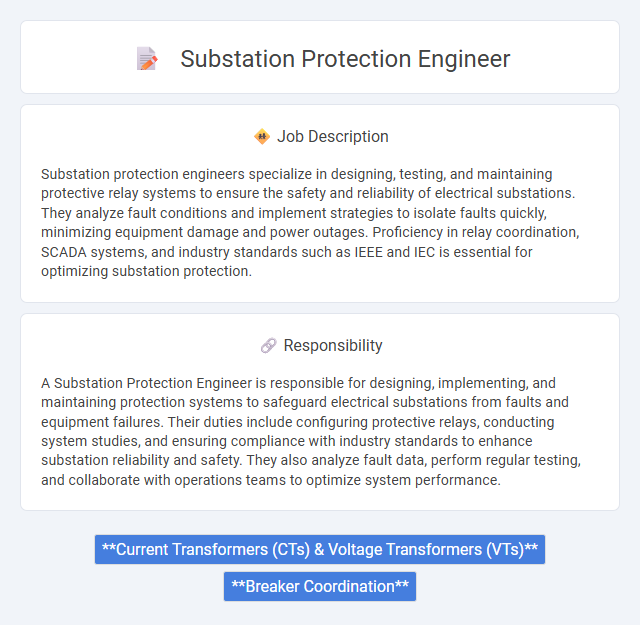
Substation protection engineers specialize in designing, testing, and maintaining protective relay systems to ensure the safety and reliability of electrical substations. They analyze fault conditions and implement strategies to isolate faults quickly, minimizing equipment damage and power outages. Proficiency in relay coordination, SCADA systems, and industry standards such as IEEE and IEC is essential for optimizing substation protection.
Individuals who are detail-oriented and possess strong analytical skills are likely to be well-suited for a substation protection engineer role. Those comfortable working in high-pressure environments and capable of troubleshooting complex electrical systems may find this job aligns with their strengths. Candidates with a proactive mindset and ability to collaborate effectively might have a higher probability of success in this specialized engineering position.
Qualification
A Substation Protection Engineer typically requires a Bachelor's degree in Electrical Engineering or a related field, with strong knowledge of power systems and protection relays. Proficiency in software tools like SCADA, ETAP, and protection relay configuration is essential, alongside familiarity with industry standards such as IEC 61850 and IEEE. Relevant certifications, including Professional Engineer (PE) or protection relay manufacturer training, enhance employment prospects in designing, testing, and maintaining substation protection schemes.
Responsibility
A Substation Protection Engineer is responsible for designing, implementing, and maintaining protection systems to safeguard electrical substations from faults and equipment failures. Their duties include configuring protective relays, conducting system studies, and ensuring compliance with industry standards to enhance substation reliability and safety. They also analyze fault data, perform regular testing, and collaborate with operations teams to optimize system performance.
Benefit
A Substation Protection Engineer likely ensures the safety and reliability of power systems by designing and maintaining protection schemes, reducing the risk of outages and equipment damage. This role probably offers benefits such as competitive salary, opportunities for career advancement, and exposure to cutting-edge technologies in electrical power systems. Employees in this position may also receive health benefits, retirement plans, and professional development support.
Challenge
Substation protection engineers likely face complex challenges involving the design, testing, and maintenance of protective relays and systems to ensure electrical grid reliability and safety. They probably encounter issues such as fault detection accuracy, coordination of protection schemes, and rapid troubleshooting under pressure. The role may demand continuous learning to adapt to evolving technologies and regulatory standards in power systems protection.
Career Advancement
Substation protection engineers specialize in designing and maintaining electrical protection systems critical for power grid reliability and safety. Career advancement opportunities include roles such as senior engineer, project manager, and protection coordinator, often requiring expertise in relay settings, fault analysis, and SCADA systems. Continuous professional development through certifications like NERC or IEC 61850 enhances prospects for leadership positions and consultancy roles in power utilities and engineering firms.
Key Terms
Current Transformers (CTs) & Voltage Transformers (VTs)
Substation protection engineers specialize in the design, testing, and maintenance of protective relays using accurate data from Current Transformers (CTs) and Voltage Transformers (VTs). Precise CT and VT measurements ensure reliable fault detection and isolation, safeguarding substation equipment and maintaining system stability. Expertise in CT and VT characteristics, wiring, and testing protocols is critical for optimizing protection schemes and minimizing relay malfunctions.
Breaker Coordination
A Substation Protection Engineer specializing in Breaker Coordination ensures the precise operation and timing of circuit breakers to isolate faults and maintain system stability in electrical substations. This role involves analyzing protection settings, conducting coordination studies, and configuring devices to prevent unnecessary outages while protecting equipment from damage. Expertise in relay coordination curves and system fault current calculations is crucial for optimizing breaker performance and enhancing overall grid reliability.
 kuljobs.com
kuljobs.com